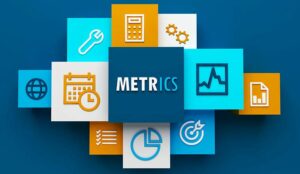An efficient call center operation hinges on the ability of management to identify flaws in their systems and practices as well as execute improvement plans to fix these quickly.
Fortunately, with a number of useful tools and techniques, team leaders can effect meaningful change based on observable and trackable data.
However, the exact tools and approach you employ at your call center for this purpose should align with your center’s mission and personnel.
Types of Call Centers
Not all call centers are created equally. Depending on your call center’s primary functions, certain metrics may prove meaningless and unusable in a practical sense, while others can be pivotal in assessing performance and improving over time.
Generally, there are two main types of call centers:
Inbound Call Centers
An inbound call center operation handles customer queries, complaints, support requests and more.
These types of call centers help to maintain customer relationships and cultivate brand loyalty among consumers.
Following are a few metrics that matter for inbound call centers:
Abandoned Call Rate
If customers are abandoning the line too frequently, it could signal that there are issues with individual agents or general call management practices.
Average Handle Time
Average handle time is the amount of time on average an agent takes to resolve an issue for a caller. Improving along this metric is of obvious importance to most call center managers.
First Contact Resolution
Also known as first call resolution, this metric clues team leaders in on agents’ abilities to quickly handle issues without subsequently revisiting them.
Outbound Call Centers
An outbound call center places calls instead of receiving them, typically with a focus on nurturing and closing sales.
This type of call center generates revenue by playing offense for an organization and reaching out directly to leads.
The following metrics matter most for outbound call centers:
First Call Close
This metric deals with success rates in customer acquisition over the course of a single call, before follow-ups are made.
Hit Rate
This metric offers insight into the number of calls agents place that are actually picked up by potential leads.
Average Call Length
This matters immensely as longer calls caused by extensive sales pitches are typically less successful than their shorter counterparts.
As the need for constant, 24/7 customer service centers increases so too does the importance of improving their performance. To make appropriate changes to a functioning call center requires a comprehensive, top-down perspective of its pressure points and these are best assessed through the capturing and condensing of relevant performance data into actionable metrics.
The tips below provide valuable insight into choosing and using call center metrics more effectively.
Expert Tips on Important Call Center Metrics to Track
1. Call on experienced managers for guidance in setting up benchmarks.
“Experienced call center managers are helpful in setting up the initial performance benchmarks for a new outbound call center program.
“These benchmarks are first estimated based on the past performance of similar outbound call center projects. Benchmarks are used from other outbound call center campaigns that are in the same industry sector or have other characteristics that make them a good choice for comparative purposes.” – Outbound Call Center Metrics (13 Top KPIs), CallHub; Twitter: @CallHub
2. Tweak your average handle time range for best results.
“Average handle time is a tricky metric, because it needs to be squarely within the range you set. When your agents’ handle time is too long, it may mean that they’re struggling with customer requests.
“Yet, if their average handle time is too short, it may mean that they aren’t offering any real assistance. Use a quality assurance software to monitor call quality and make sure all your bases are being covered.” – The 10 Best Metrics To Measure Call Center Agent Productivity, Playvox; Twitter: @Playvox
3. Consider the time customers spend on hold carefully.
“Even before customers engage with an agent, customers judge your company based on how long they remain on hold — and how you communicate wait times.
“You can use metrics from this category to gain a view into the critical period between initiation of contact and being addressed by an agent.” – Swati Sahai, The Definitive List of 27 Call Center Metrics and KPIs, Pointillist; Twitter: @PointillistView
4. Try tracking staffing requirements as well.
Erlang C is a standard formula for determining the number of call center agents needed based on call volumes, Average Handle Time (AHT), and customer service goals. But using an Erlang calculator isn’t as easy as it looks.
“If you plug in the wrong numbers — for example, an impossibly high 100% for max occupancy, or agent productivity — you’ll either drive up call center costs with no appreciable return, or you’ll end up with too few agents and a lower quality service experience.” – Call Center Staffing: How Many Agents Do You Need? Stella Connect; Twitter: @StellaConnect
5. Be sure to capture inbound call volume first.
“Inbound Call Volume: The simplest, but still one of the most important call center metrics. The majority of inbound call center metrics originate here and can’t be calculated until you count your inbound customer service calls.
“You can measure the number of inbound calls daily, weekly, track it over a specific period and compare from month to month to see if the total number has changed.” – Jakub Kliszczak, TOP 20 Call Center Metrics Managers Can’t Ignore, CrazyCall; Twitter: @CrazyCall
6. Measure service level and response time for staffing insights.
“Service level and response time are classic metrics, and they’re fundamental to effective management of the contact center and the customer experience.
“These metrics tell you how accessible the center is to customers, how many agents are needed to provide efficient service, or how your center’s service compares to others in your industry.” – Seven Metrics to Watch for Call Center Success, ICMI; Twitter: @CallCenterICMI
7. Use list closure rates to guide your outreach efforts.
“This rate measures the percentage of prospects that were closed in comparison to the total number of potential prospects for a targeted, outbound call center campaign.
“A low rate indicates problems with the calling list, such as bad numbers, cold leads, or the improper inclusion of ‘do not call’ numbers.” – Dan Leubitz, 13 KPI’S for Outbound Call Centers that you must be following, Deskforce; Twitter: @deskforce
8. Streamline your agents’ call scripts for better first call close results.
“You may not find the solution to FCC immediately. However, it is important that you are identifying trends that have led to successful sales, constantly tweaking and optimizing your campaigns to account for those factors.
“The best way to improve this KPI is by providing your sales reps/agents with a well thought-out guided script that will not only help build your agents’ confidence, but will also guide them through the success-proven process of a sales call.” – Top Outbound Call Center KPIs, Convoso; Twitter: @Convoso
9. Improve call abandonment ratios by linking incoming calls to live agents.
“What if callers are answering the calls but are not connected to live agents quickly? They abandon the call and you lose a potential customer. Set your routing parameters such that calls are connected to live agents and customers do not have to hold for a long time.” – Tanya Bansal, Everything You Need To Know About An Outbound Call Center, Ameyo; Twitter: @AmeyoCIM
10. Track calls made by each agent for deeper insight into efficiency concerns.
“The rate of calls made out per agent, campaign and team is a great way to measure the strength of outbound sales calling, and whether an agent and team is on track. Benchmarking these call center metrics for later comparison, along with actual leads that are processed, will help you get a good idea of overall agent and campaign results.
“You can also compare these with other teams and other campaigns to see who is performing better, and which ones need to be tweaked. And for the team with higher call rate averages, look to find the source of their success.” – 4 call center metrics for outbound sales success, Noojee; Twitter: @noojeetel
11. Measure transfer rates to help reduce call complexity and customer effort.
“In addition to First Call Resolution, some calls centers also measure transfer rate. This is a measurement, expressed as a percentage, of the number of calls that the agent transfers to someone else to complete.
“This might be to a supervisor or to another department. The reason for the transfer could be the fault of the agent, a request by the caller, or an incorrect routing of the incoming call.” – F. John Reh, Call Center Key Performance Indicators, The Balance Careers; Twitter: @thebalance
12. Do not forget to measure your employee turnover rate.
“Turnover or attrition is more for the company. It measures and analyzes how often a call center agent leaves or resigns. Getting new agents is costly so it is better for companies to have lower attrition.” – 7 Top Call Center Metrics You Need to Analyze, Inbound Call Center Philippines; Twitter: @IBCPh
13. Track Service Level to better meet staffing requirements.
“This is a crucial metric, especially for inbound call centers. It has to do with a call center’s ability to plan for call-volume fluctuation or staff their facilities accordingly. And it’s directly tied to customer service quality.”
– Call Center KPIs: The Metrics that Reveal Dead Air, tcn; Twitter: @tcn
Expert Tips for Leveraging Call Center Analysis to Monitor Metrics
14.Deploy reliable analytics software with real-time access.
“By deploying reliable call center analytics software, performance-based results can be accurately measured. With real-time access, the service vendor can immediately identify problems and take appropriate action.
“Likewise, it’s imperative for companies to enable customers to help themselves. This is achieved by maintaining a comprehensive knowledge base (FAQs) that customers can use as the first line of support.” – Top Metrics that Measure Inbound Call Center Performance, Tenfold; Twitter: @growtenfold
15. Prioritize improvement of first call metrics.
“According to SQM Group, only 3% of customers who have a problem solved during the first service interaction are likely to churn. Compare that to the 38% of customers who are likely to churn if the issue isn’t resolved after the first call.
“The most effective means of customer service is solving a problem quickly, and first-call resolution rate can tell you exactly how well you are able to do so.” – Clint Fontanella, 7 Call Center Metrics to Measure Your Customer Service, HubSpot; Twitter: @HubSpot
16. Get clear on objectives before studying metrics.
“Planning call center metrics strategies is a big undertaking, but it doesn’t have to be difficult or complicated. The first step is to establish the business objectives and build from there. What are the goals of the business and how can the call center best meet those goals?” – A guide to call center metrics, TechTarget; Twitter: @searchCXM
17. Get feedback from customers to boost satisfaction scores.
“Customer satisfaction is an important parameter, and most of the companies try their level best to keep it stable or increase it from time to time by changing their strategies.
“Every customer–agent conversation should end with a request from the agent to the customer for feedback or a rating for the response made by the agent. Usually, this rating is made in the scale of 1 to 10.” – Vipul Srivastav, 5 Useful Call Center Metrics to Look For, Call Center Hosting; Twitter: @callcenterhost
18. Focus on root causes to improve poor metrics.
“Root cause analysis helps you solve problems in your call center by addressing the source of the problem. It’s not about quick fixes that only work for a short period. It’s about determining where and how the problem started so you can make continuous improvement. There are three types of root causes:
- Human behavior where expectations were not met.
- Physical malfunctions in equipment, software or other material sources.
- Organizational breakdowns in processes or policies that hinder employees from doing their work.”
– How to Capture & Analyze QA Data to Improve Call Center Outcomes, Scorebuddy; Twitter: @score_buddy
19. View all metrics through the lens of the customer journey.
“The more you learn about the customer journey as well as the gaps in the buyer circle, the easier it is to optimize sales and marketing strategies and ensure greater long-standing customer loyalty.” – Tobias Hösli, How to use your call center analysis optimally, talkbase; Twitter: @talkbase
20. Incorporate cross-channel analytics into your approach.
“A well-managed call center needs to have a way to determine what channels any of their customers are using at a given moment, and tailor their service options toward that.
“If a phone agent has this information at their fingertips, they can provide a more personal, pleasing customer interaction. Does a customer do most of their banking online?
“A real-time script update can alert the agent to let the customer know that their problem can also be solved using that channel in the future.” – Understanding Call Center Analytics, Salesforce; Twitter: @Salesforce
21. Pair demographic data with other metrics for greater behavioral insight.
“Most companies collect demographic data about their customer bases but fail to take full advantage of this information.
“Sure, demographic data can tell you who your customers are, but pairing those insights with customer feedback from call center sources can better equip you to understand what your specific customer segments want and need.” – Susan Ganeshan, How to Slice and Dice Your Call Center Data, CMSWire; Twitter: @cmswire
22. Optimize first response time by providing a few more agents than your forecast calls for.
“Creating a buffer: having more than enough agents for your predicted demand costs more money in the short run but leads to consistently short waiting times for customers, and improves average waiting times if agents are sick and/or there are many more callers than expected.
“Worst case scenario: you spend more money paying customer support reps than you would like.” – Mona Lebied, 9 Call Center Metrics & KPIs That You Need To Know For Excellent Customer Service, DataPine; Twitter: @datapine
23. Keep up with missed call metrics to curb customer frustration.
“Missed calls are important to take into consideration, especially if your team has been struggling with that metric for a while. This means that a customer’s issue almost certainly has not been resolved.
“They might decide to try a different channel to reach you, and by the time they do, they will be much more irritated due to a miss in first-contact with your organization.” – 15 simple call center KPIs worth tracking, aircall; Twitter: @aircall
24. Use right party contact rates to narrow your outreach efforts to decision makers.
“Tracking the Right Party Contact Rate can help you to determine how many of your sales calls are falling through because you are not speaking with the right person.
“Decision makers are the ones in a position to capitalize on what you’re selling. The Right Party Contact Rate metric can also help you to determine if the contact data you are utilizing to make sales calls has the right information that you need.
“If your Right Party Contact Rate is low, your data sources may need an overhaul.” – 5 Outbound Call Center Metrics You Should Be Tracking, calltools; Twitter: @calltools
25. Try measuring file penetration for clearer understanding of outbound call success.
“File penetration measures Number of client records closed versus total records received. Closed status, which is the same as penetration, is determined by the following: the client makes either a yes or no decision; wrong client phone number; client will be absent for extended time; client deceased; etc. The relevance of penetration is cost based.
“For every client name in a campaign, there is a hard dollar cost attached to generating that name.
“The overarching definition of a closed record is a record that an agent/centre will not attempt to contact again.” – Outbound Call Centre Key Metrics, theCMA; Twitter: @cdnmarketing
This blog post has been re-published by kind permission of CallMiner – View the original post
To find out more, visit their website.
Author: Guest Author
Published On: 27th Nov 2019 - Last modified: 6th Aug 2020
Read more about - Hints and Tips, CallMiner



















